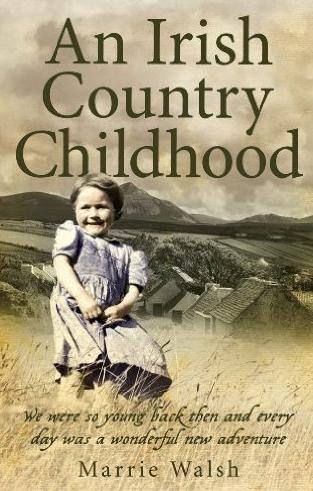Irish Fairies in the 1930s: Marrie Walsh February 17, 2017
Author: Beach Combing | in : Modern , trackbackHow long did fairy beliefs survive in different parts of Ireland? And how well did these beliefs survive? In some senses the question should be easy to answer. After all, Ireland has the most detailed folklore records in the world. But unfortunately Irish folklorists were, after independence, more interested in folklore tales and tale types than fairy beliefs. So, while a lot of fairylore got swept into their dustpan, little was analysed and much was thrown away. This is why Marrie Walsh’s An Irish Country Childhood is so valuable. This short work from 1996, perhaps 45,000 words, is an autobiographical description of growing up in Co. Mayo (in the far west of Ireland) early in the twentieth century in a bilingual Gaelic-English environment: the story takes us from Marrie’s birth in 1929 to plane crashes in the Second World War. The author has no special interest in fairylore, but there are six incidental fairy references.
1) Adults tell children (jokingly) that fairies ride on hares’ backs. (23)
2) The Captain forbids the children to go near a certain fairy fort. ‘Little did he know we were warned from infancy what would befall us if we dared set foot in the forbidden ground. The whirlwind that was familiar in our part of the country was supposed to be fairy magic that swept you to their palace, for the were always looking for mortals to help them reign in their kingdom.’ You had to spit three times to keep the fairies at bay. (74-5)
3) Some said an old solitary man was in league with Satan, others that he communed in his house with the fairies (80)
4) The death of anyone in the D’Arcy family would be greeted with fairy music: the family had been granted music after being given a number of wishes in the distant past, many said by the fairies themselves. (99)
5) A banshee would pronounce deaths in certain families (178)
6) A ghostly army of night lights went down a certain path, which ended in the local fairy fort. Some said these were ghosts, some fairies, some a natural phenomenon. (178-9)
Two things stand out in these tales. First, fairies are a real presence in the lives on Marrie Walsh and her friends. Second, though, the fairies are in precipitous decline. For example, the D’Arcy family had clearly been given gifts by the fairies (thinking about other similar Irish traditions): but the locals were unsure about where these gifts had come from. Likewise the army of lights that goes to the fairy fort could be fairies or ghosts: that it ends in the fairy fort was an important clue… Fairy belief was, at least, strong enough to make an impression on the infant Marrie. The final death blow was the dispersal of population. Co Mayo was extremely poor and many of those Marrie Walsh described moved east to wealthier parts of Ireland or abroad during or after the war.
Other little known Irish fairy sources: drbeachcombing AT yahoo DOT com
25 Feb 2017: Many readers make the point that fairy belief has survived in large parts of Ireland. LTM can stand for many: ‘We still believe in fairies. You see the lights at night up on the hills.‘



